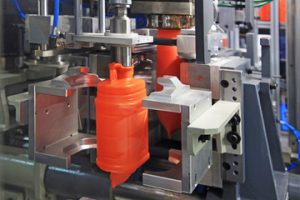Many plumbing businesses are family-run and rely on repeat customers for revenue. Other plumbers choose to partner with a law firm to ensure legal compliance and set up accounting systems.

The initial impression that your clients and prospects have of your business is built from the brand message and visuals you use. This includes your logo, website, business cards, and signage. Contact Ranger Plumbing Company for professional help.
Plumbing problems can quickly become serious disasters if they are not taken care of properly in a timely manner. Relying on a reliable plumber can ensure that these issues are resolved as soon as possible to minimize damage and inconvenience. A trusted plumbing contractor will employ highly trained and licensed professionals who follow industry standards for installation, repairs, and maintenance. They will also be able to provide guidance for system design and offer valuable cost-saving options that can improve long-term performance.
A reputable plumbing company will have fully stocked service trucks to respond to emergencies promptly. They will also have a wide range of equipment including video cameras to inspect pipes, high-pressure water jetters for drain cleaning, and pumps for removing water from flooded areas. They will also offer preventative maintenance programs to reduce problems and repair costs over time.
It is important to have the correct insurance coverage for your plumbing business. General liability insurance protects you from claims of property damage or personal injury made by third parties. This is a legal requirement in most states. In addition, you will need workers compensation insurance to cover any injuries or illness incurred by your employees.
You will need to select the best business structure for your plumbing company, depending on your goals and resources. Many contractors choose to operate as a sole proprietorship for simplicity, while others prefer an LLC to separate their personal and business assets. A legal professional can help you determine the best option for your unique situation.
Experience
Plumbing is one of the most important aspects of modern life. It ensures clean water, proper waste disposal, and a safe environment. Professional plumbers are trained to handle a wide range of issues and provide high-quality work. They can also help with the installation of new fixtures, such as sinks, tubs, and toilets. They are familiar with local codes and regulations and have the experience to tackle even the most complex projects.
In addition to plumbing services, plumbers can also install and repair sewer systems. They are familiar with the layout of a house or commercial property and can plan a system that will meet its needs. They also know how to handle different materials, including copper, steel, and PVC.
A well-crafted business plan is essential for any plumbing company. It will help you understand your market, determine your ideal customer base, and identify your unique selling point. It will also help you develop strategies for marketing and advertising your company. In addition, a business plan will serve as a reference for lenders and investors.
Finding the right employees is vital for a plumbing company. During the interview process, ask questions that assess the candidates’ plumbing skills and customer service mindset. Be sure to avoid asking personal questions, such as age, religion, and marital status. It is also a good idea to check references and licenses before hiring a plumbing contractor.
Plumbing contractors must have a state-issued licence to operate in the field. This requires passing an exam and meeting educational and work experience requirements. A licence also indicates that the plumbing contractor is a reputable and reliable professional.
In addition to licensing, a plumbing company must have the proper insurance coverage. This includes liability and workers’ compensation coverage. It is also a good idea to invest in a business owner’s policy, which combines liability and property coverage for about $166 per month or $1,992 annually. This will protect the plumbing company from financial risks and commercial threats that may arise in the future. It is also essential to have insurance because it will help protect the customers’ property and their investment in a plumbing project.
Customer Service
Plumbing problems are an inevitable part of owning a home. But if left unchecked, they can lead to water damage, waste, and low water pressure. Professional plumbers are trained to assess and repair issues quickly and efficiently, saving homeowners money and stress in the long run.
When setting up your business, identify your target customers and understand their needs. Do they need help with clogged drains and leaks, or do they require more extensive services like pipe installation and maintenance? Knowing your market will help you determine the right pricing strategy.
You should also decide what type of business structure is best for your company. A sole proprietorship is simple to set up but does not offer liability protection, while an LLC offers a balance of flexibility and tax advantages. Finally, you should obtain insurance for your business to ensure that you are covered in case of a claim or lawsuit. A business owner’s policy is an affordable option that combines property and general liability coverage. This will give your clients peace of mind that you have their best interests in mind.
Equipment
When starting a plumbing company, it’s important to invest in the right equipment. The right tools can make all the difference when it comes to repairing pipes, fixtures, and drains. This includes everything from video cameras for inspecting pipes to high-powered water jetters for clearing clogged drains. Also, a good quality plumber’s toolbox should include items like pipe cutters, wrenches, pliers, and plumbers putty to create water-tight seals.
While a plumber’s primary duties are to repair and install water systems, they must also be familiar with building construction. This means understanding how a home or business is designed, including the location of sinks, toilets, and showers. They can then design and install the required plumbing to meet a building’s needs. This may involve extending the main water line, installing a new septic system, or rerouting existing sewer lines.
Professional plumbers must also have the proper licensing and insurance to operate their business. Licensing requirements vary by state, but most require a plumber to pass an exam and have a current license before providing services. This ensures that the plumber is competent and can handle any problems that arise. It also protects clients from shoddy work and legal issues.
In addition to a license, plumbers should carry liability insurance that covers damage to client property and injuries sustained by employees while on the job. This is especially important for larger businesses that may have multiple locations and a large number of workers. A standard business owner’s policy offers liability and property coverage for about $166 a month or $1,992 annually.
When beginning a plumbing company, it’s important for owners to decide whether they will offer residential or commercial services. Residential customers typically need repair services for leaks and clogs, while commercial customers may require installation of kitchen or bathroom fixtures. Choosing a niche will help a plumbing company to better focus its resources and marketing efforts. It will also allow the company to establish a reputation for expertise in a particular area. In addition, it will help the owner to determine appropriate rates for its services.





